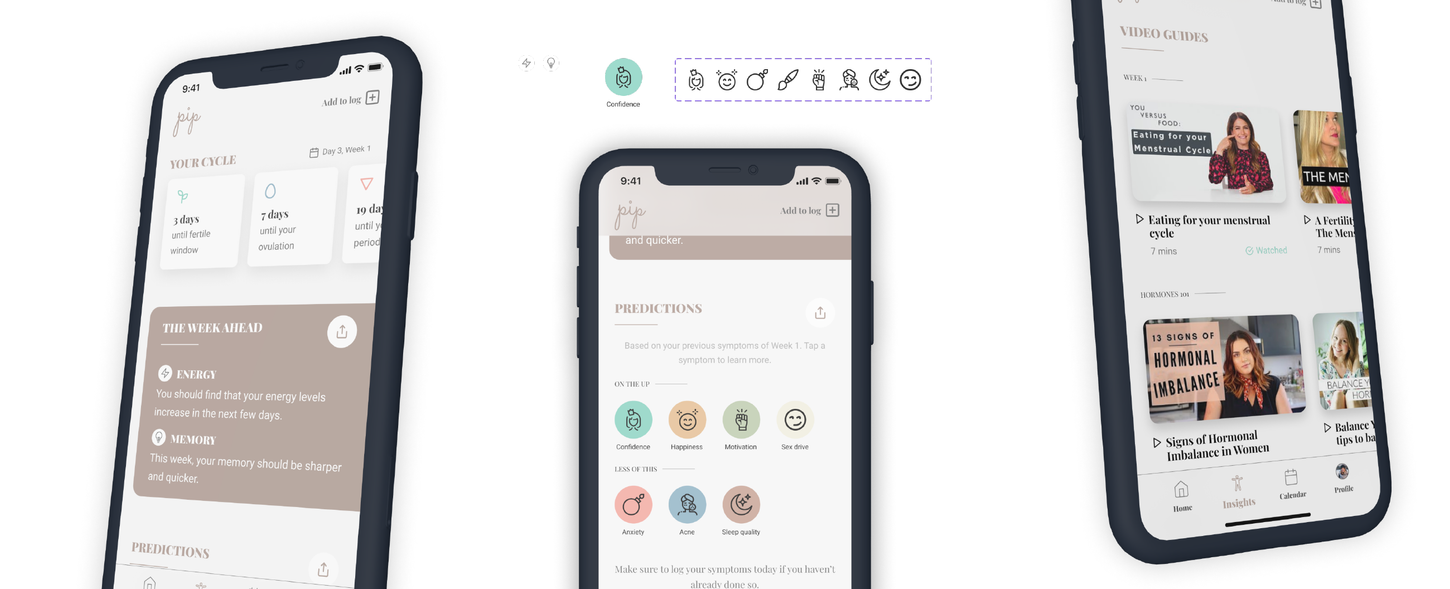top of page
Using a learning algorithm to accurately predict phases of female reproductive cycles and surface timely holistic advice about both physical and mental health.
Case study details
The idea behind pip was to help people with reproductive cycles to understand more than just when parts of the cycle occur.
Problem
People do not have enough information about the biological or psychological effects of their reproductive cycles.
Discovery
Reproductive cycle 'assistants' only inform users of when to expect events such as their period, or their ovulation - but not other effects.
'Period tracker' apps have no personality and can be confusing about dates and durations.
Such apps inflict users with information overload when it comes to insights, and the UI can be overwhelming.
Media content was often over-produced and seemingly had an agenda - eg. advertisement.
Define
People who menstruate needed a solution more holistic and comprehensive than a simple 'period tracker', but less corporate and invasive than existing products.
Solution
A mobile app with clean UI and a sense of character was chosen as a means for this product.
Develop
To give the product character, a conversational dialogue was presented, with the app 'talking' to the user. The theory was that a 'friend' would allow the user to confide this intimate part of their lives.
Wireframes were kept very clean and simple, with limited information on each page. This kept a sense of calmness and unobtrusiveness to the product.
To keep information available 'at-a-glance', various ways of segmenting detail were tested - including separate app pages, and card layouts.
Deliver
A chat-bot onboarding experience was chosen to keep the flow conversational and friendly, whilst using familiar navigation to guide the user through setup.
Clean, spacious UI and simple colour tones allowed the product to remain calm and modest.
Media content would be carefully and professionally curated from creators, whilst making use of third-party platforms such as Spotify, YouTube and Headspace to keep hosting costs down.
The ability to share surfaced health insights would allow a sense of community to develop within groups of users' friends and family.
bottom of page



